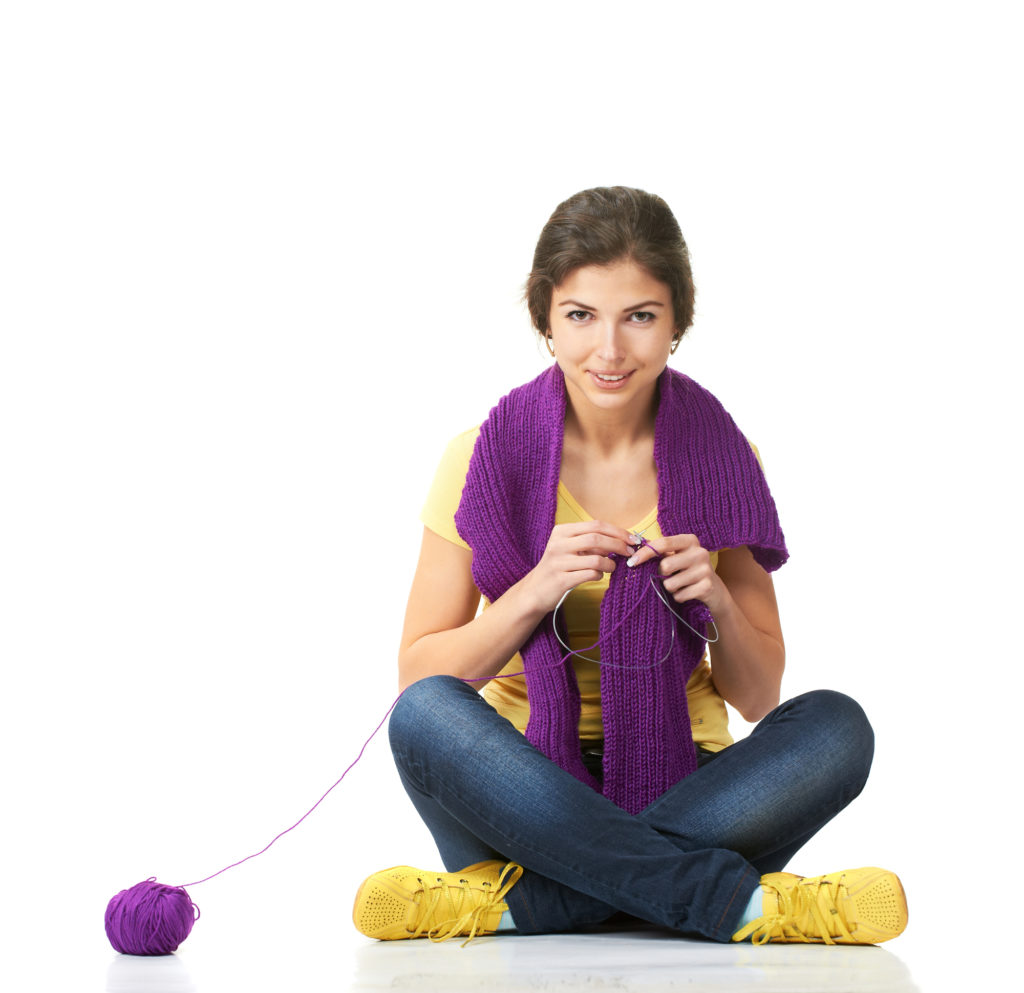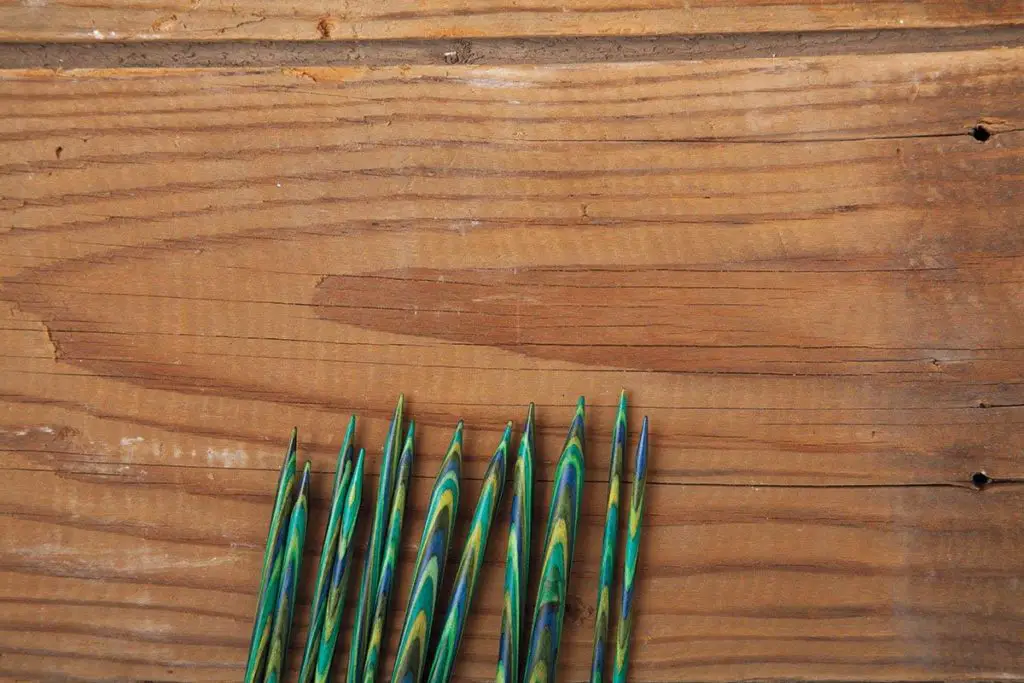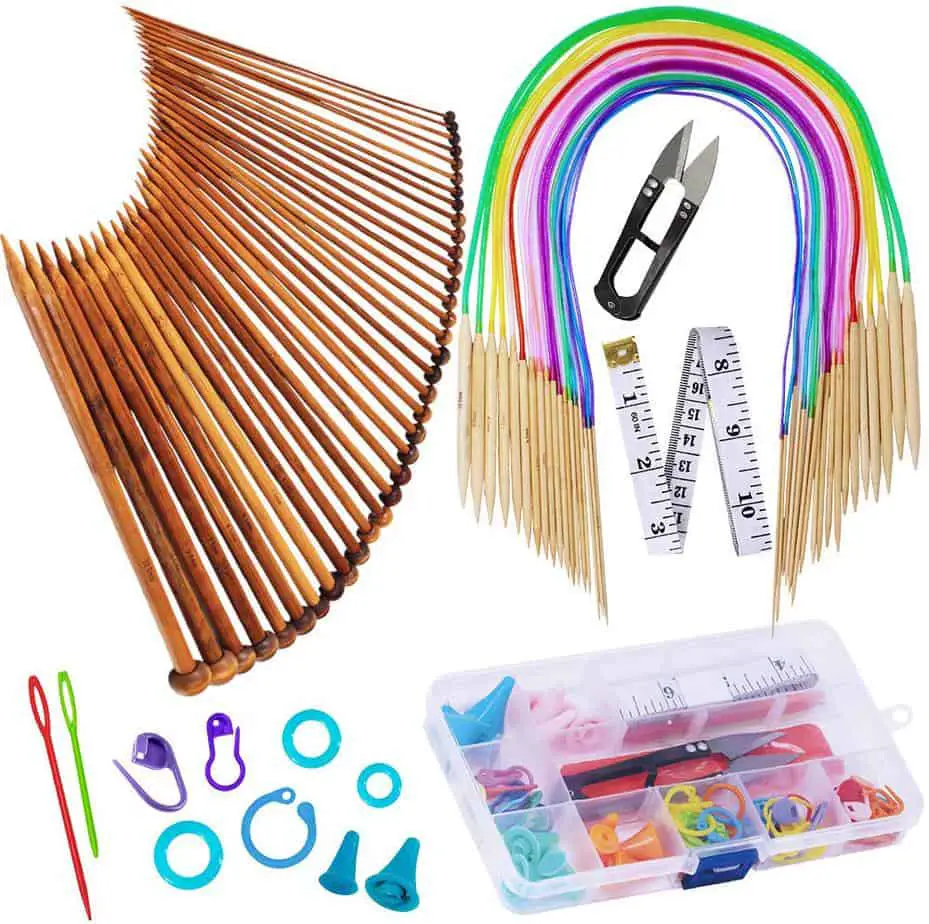Which Size Knitting Needles Should Beginners Use?
Knitting is a great art form that anyone can enjoy. No matter how old you are or where you’re from, you can knit! Since knitting has been around for hundreds of years, there are a lot of different styles and techniques, not to mention the hundreds of different types of knitting needles.

With all these options, getting started can be a little intimidating, but there is no need to worry! In this article, we will give you all the basic knowledge you need to pick your first pair of knitting needles as well as some other helpful tips that will have you well on your way to creating your first piece of knitwear.
Why So Many Different Knitting Needles?
Let’s start with the most obvious question: Why are there so many different types of knitting needles? Well, as you can probably guess, the different sizes are used for different types of projects. If you look at any two pieces of knitwear, you will notice that the stitches may look similar, but they are different sizes. The difference in stitch size is due to the size of the needles as well as the thickness, or weight, of the yarn.

Know Your Knitting Needle Sizes
One important thing to note about knitting needles is that there are standard sizes, but, like clothes and shoes, the numbers to designate those sizes are different in different countries. In the United States, needles are sized from 1 to 17, 1 being the smallest and 17 the largest.
There are actually needles bigger than size 17, but you would only need those if you were making something huge. Needles are also measured in their actual size, specifically in millimeters. Be careful! Size 9 is not the same as 9mm.
Most patterns will tell you the size of the needles you will need, just double-check whether the size is the American standard or in millimeters. You will probably notice that many brands of needles will also have the UK size on them.
Uk sizes are reversed from the American sizes, so the higher the number, the smaller the needle. Once you know what you are looking for, the needle sizes are pretty simple, you just have to be conscientious when reading your patterns.
Straight, Circular, and Double Pointed Needles
Now that you know sizes, let’s talk about styles. There are three styles of knitting needles, straight, circular, and double pointed.
Straight needles are probably what you are most familiar with. These are the long straight needles with a point on one end and a stopper on the other. These are the type being used whenever you see someone knitting in a movie. They are great for all of your flat projects, such as scarves.
Circular needles are not actually circular but are used for circular or larger projects. These feature two shorter needles, usually no more than 4” to 6” long, connected in the middle by a stiff plastic cord.
Double pointed needles (DPN) are exactly what they sound like, needles with points on both ends so you can knit from either side. DPNs are great for smaller circular projects such as socks or stuffed toys.
Materials
As if sizes and styles were not enough, there are also different materials to consider. Knitting needles come in many different materials such as plastic, metal, and wood. You can even find custom made needles if you are so inclined. This is a part of the needle choosing that is really up to you. Some people swear by one type or the other, but there is not a set standard.
One thing to consider for beginners is that wooden needles, which are usually made out bamboo, offer a bit of texture that you will not find on metal needles. The texture provides a tiny bit of friction that will make it harder for your stitches to slip off the needles, which can be very helpful. Metal needles are great for those who want to do speed knitting because the stitches will slip off the needle with ease.
Yarn Weight Matters
The last thing you need to consider when choosing your needles is your yarn. As we mentioned earlier, the weight of your yarn, along with your needles, determines the size of your stitches. There are seven basic categories for yarn weight from super fine all the way to jumbo. Conveniently, most yarn brands indicate the yarn weight right on the package, so you will not have to guess. If you already have your yarn, check the label. It should say one of these weights and it will also have the suggested needle size.
1. Super Fine, Needle Sizes 1-3
2. Fine, Needle Sizes 3-5
3. Light, Needle Sizes 5-7
4. Medium, Needle Sizes 7-9
5. Bulky, Needle Sizes 9-11
6. Super Bulky, Needle Sizes 9-17
7. Jumbo, Needle Sizes 17+
These are suggested sizes, so they are not absolute, but when you are first beginning your knitting journey, it is helpful to have a guide. As you now know, using a different size needle will affect the size and look of your project, so try the suggested needle size when creating your stitch swatch. What is a swatch, you ask? Well, we’ll tell you.

Going back to that yarn label, you will see that next to the weight and recommended needle size there will also be a measurement indicating how any stitches and rows you will need to achieve a specific size of swatch. This little sample of your knitting will usually be about 4” x 4” and allow you to see both what the knitted yarn will look like as well as showing you how your knitting will affect the size.
Adjusting your needle size and stitches to achieve the size you want can be a complicated process that we do not have time to discuss here. It is extremely important if you are planning on knitting something for which the size really matters, like clothing, so remember to do more research on that before starting a large project.
Time To Choose Your Knitting Needle
Now we get to the part you have been waiting for, how to choose! As a beginner, you will want to start with a flat project and preferably medium-sized needles, such as size 7 to 9. As you know from our chart, size 7 to 8 needles work best with medium weight yarn. This is the perfect starting size for a few reasons.
Inexpensive Yarn: Most of the inexpensive yarn you find at big box stores is medium weight acrylic yarn, which is the perfect yarn to practice with. Like all beginners, you will most likely make mistakes and have to unravel your work a few times before you find your knitting style and tension. Acrylic yarn holds up quite well to this type of treatment and can still look nice when you’re done.
Easy Loops: This combination of medium yarn and needles will result in medium-sized loops for your stitches. These are much easier to work with, compared to tiny or huge stitches. These loops are easy to transfer from needle to needle when you are knitting. The stitches will also be well-defined within the worked piece, so if you need to go back and count your rows or stitches, they will be easy to see.
Keeping Your Grip: These sizes are also easy to hold on to. That may sound a little silly, but believe us, it matters.
Extra Expert Tip: Choose a brightly colored or variegated yarn for your first project. Black may go with everything, but black stitches can be hard to see if you have to go back and count them.

Remember These Tips!
Starting your first knitting project is exciting! Do not let all the options and information-overload stop you from starting your project. Just remember our tips:
- Find a simple flat pattern, such as a scarf or washcloth.
- Use medium weight yarn, in a bright color.
- Choose size 7 to 9 Needles, preferably wooden.
In Conclusion
With these supplies, you are sure to start your project out on the right foot and become an accomplished knitter. Remember, just like in all of life, there is always more to learn! When you have mastered flat projects, you can move up to circular, more complex projects.
Once you become a knitter, you will never lack for fun projects to create. We hope the information here has encouraged you to pick up some needles and get started. Happy knitting!

